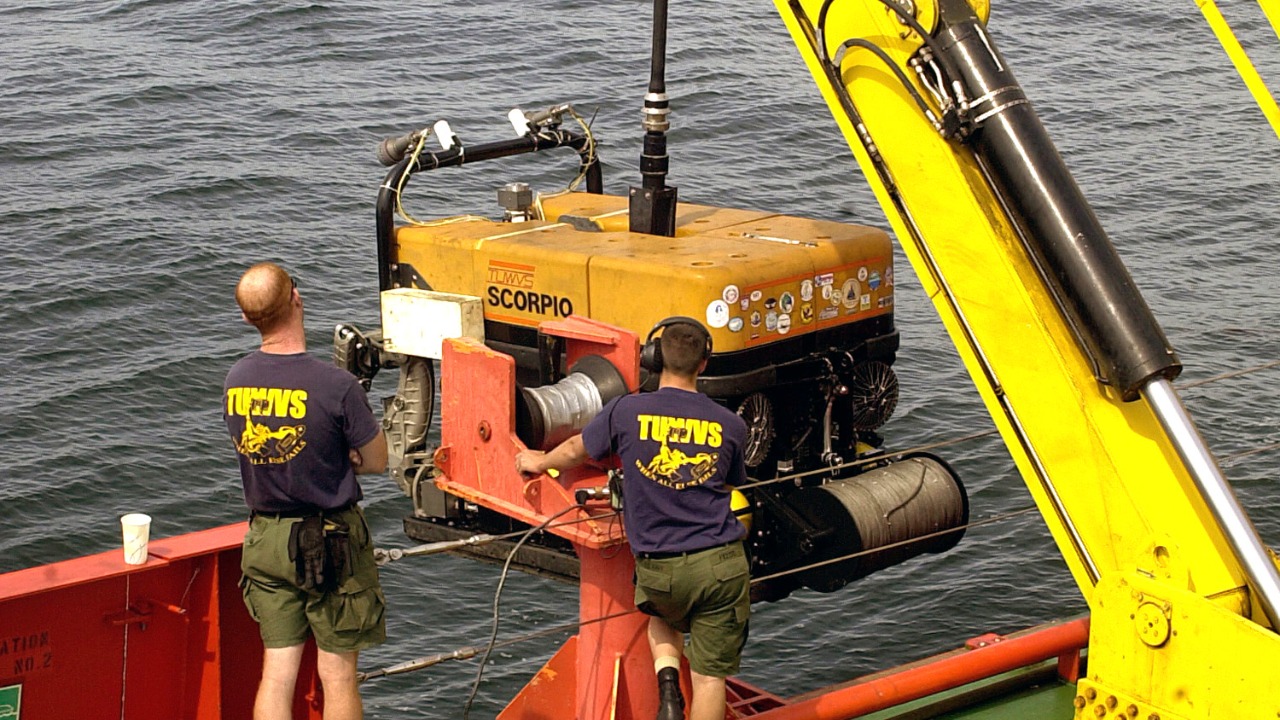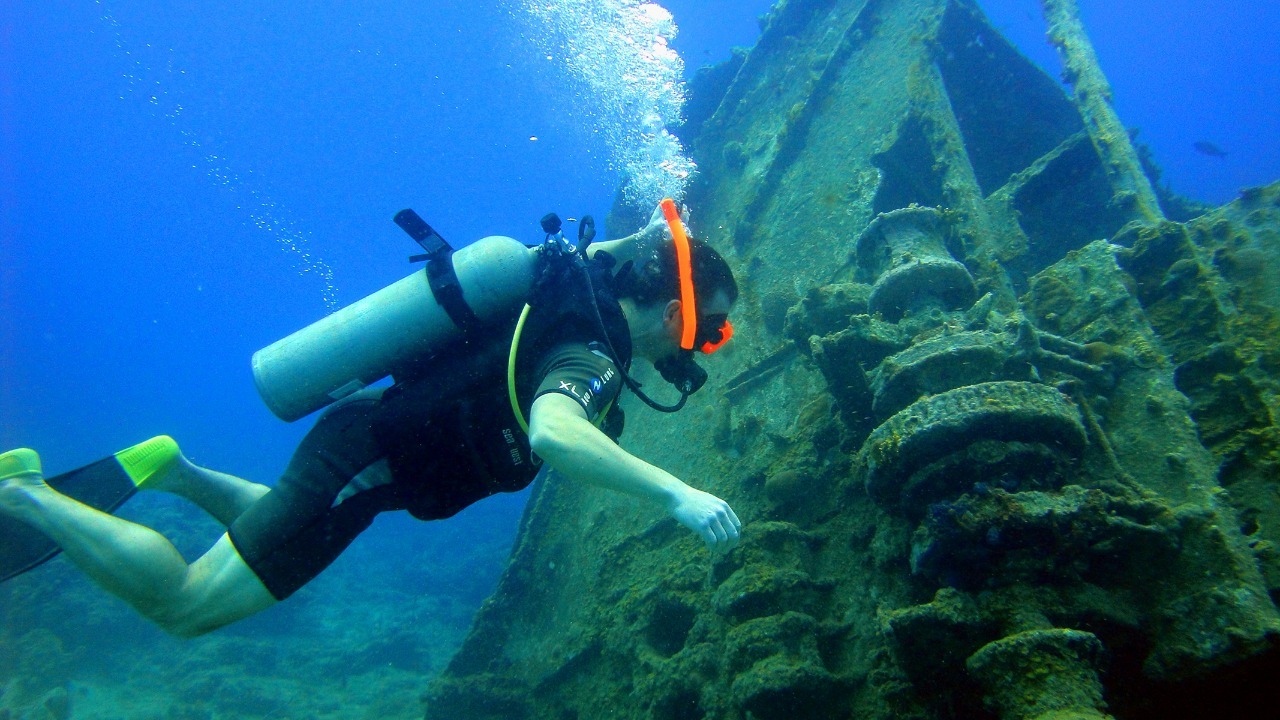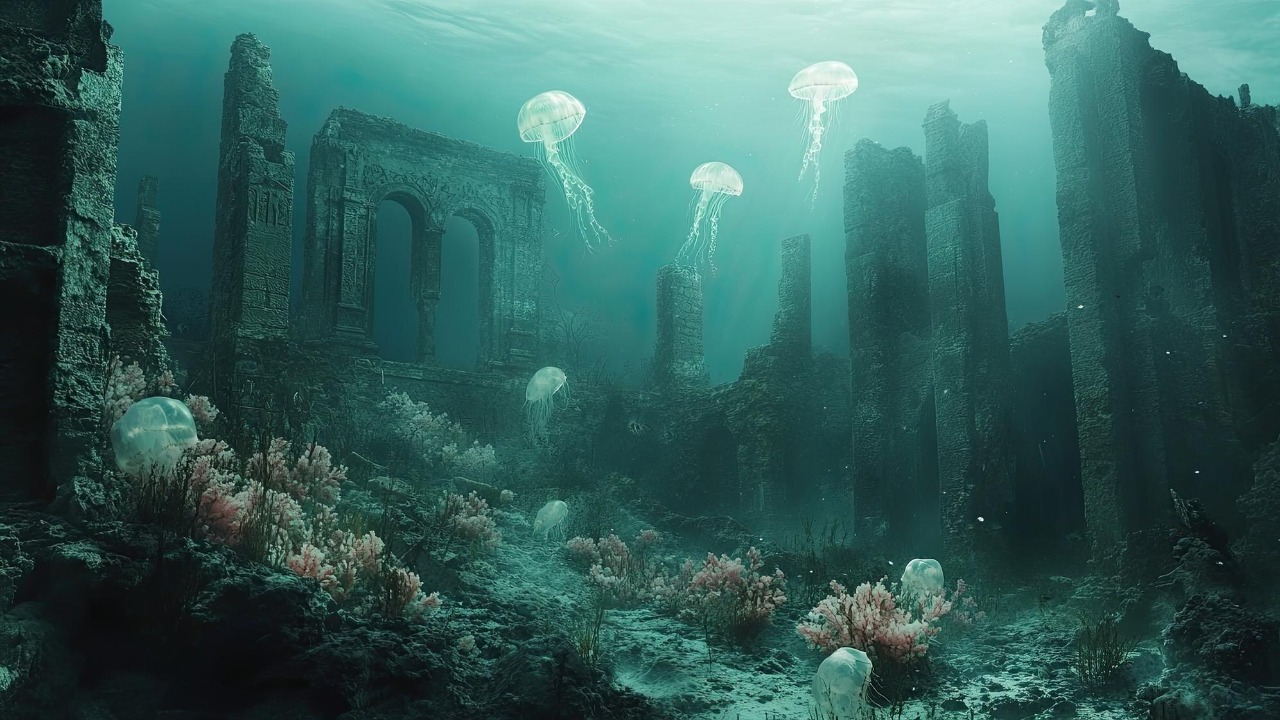
Deep beneath the ocean’s surface, scientists have made a groundbreaking discovery: a ‘Lost City’ that challenges our understanding of life on Earth. This underwater marvel is not only unique in its geological formations but also hints at the possibility of life forms unlike any we have seen before.
The Discovery of the Lost City

The Initial Expedition
The journey to uncover the Lost City began with a highly specialized team of oceanographers and marine biologists. Utilizing advanced technology such as remote-operated vehicles (ROVs) and deep-sea submersibles, the expedition faced treacherous conditions in the abyssal depths. These experts, equipped with cutting-edge sonar mapping techniques, embarked on an exploration mission that would ultimately redefine our understanding of underwater ecosystems. The challenges were immense, with the team battling against crushing pressures, near-freezing temperatures, and the vast darkness of the ocean floor.
The successful deployment of these technologies marked a significant milestone in deep-sea exploration. The team employed state-of-the-art equipment that allowed them to capture high-resolution images and samples from previously inaccessible regions. The meticulous planning and execution of the expedition were pivotal in revealing the Lost City, a discovery that has sparked intrigue and excitement within the scientific community. The blend of human ingenuity and technological innovation made this remarkable achievement possible, setting a precedent for future explorations.
Unveiling the Lost City
The moment of discovery was nothing short of awe-inspiring. As the ROV descended into the obscure depths, the team watched in anticipation. Suddenly, the cameras captured breathtaking images of towering structures rising from the ocean floor. These formations, unlike anything previously documented, stood as silent sentinels in the deep. Initial observations revealed complex mineral structures and unusual geological features, prompting a flurry of excitement and speculation among the scientists.
The discovery was met with a mix of astonishment and curiosity. The Lost City, with its enigmatic and otherworldly appearance, offered a glimpse into uncharted territories of the ocean. As scientists scrutinized the images and data, they realized the profound implications of their findings. This newly uncovered site not only expanded our understanding of underwater geology but also hinted at the presence of unique life forms adapted to extreme conditions.
Unprecedented Geological Formations

Hydrothermal Vent Structures
The Lost City is characterized by its remarkable hydrothermal vent structures, which stand in stark contrast to the more commonly known black smokers. These towering white mineral formations are composed primarily of calcium carbonate, a stark difference from the metal sulfide-rich structures typically associated with hydrothermal vents. The Lost City vents reach heights of up to 60 meters, dwarfing their black smoker counterparts and creating a surreal underwater landscape.
The formation process of these structures is equally fascinating. Unlike the high-temperature, acidic environments of black smokers, the Lost City vents are formed in alkaline conditions with lower temperatures. This unique environment fosters the precipitation of minerals that are rarely found in other parts of the ocean. The presence of these towering formations challenges existing geological models and invites further investigation into the processes that govern their development.
Unique Mineral Composition
One of the most intriguing aspects of the Lost City is its unique mineral composition. Scientists have identified a range of minerals that are not typically found in underwater formations, including brucite and aragonite. The presence of these minerals suggests a complex interplay of chemical reactions occurring within the hydrothermal system. This mineralogical diversity provides valuable insights into the geochemical processes shaping the ocean floor.
The analysis of these minerals has far-reaching implications for our understanding of Earth’s geological history. By studying the mineral composition of the Lost City, scientists can gain a deeper understanding of the dynamic processes that have shaped our planet over millions of years. This knowledge has the potential to unlock new insights into the evolution of Earth’s crust and the interactions between geological and biological systems.
Potential for Extraterrestrial Life Insights

Extreme Conditions and Life
The Lost City presents an environment of extreme conditions that support unique life forms. The high alkalinity and low-temperature conditions of the hydrothermal vents create a habitat that is inhospitable to most known organisms. Yet, within this harsh environment, life thrives. Microbial communities, adapted to these extreme conditions, offer a glimpse into the resilience and adaptability of life. These organisms provide valuable clues about how life might exist on other planets with similar environments.
Studying these life forms also enhances our understanding of the potential for life beyond Earth. The ability of organisms to survive in extreme conditions suggests that life could exist in similar environments elsewhere in the universe. This discovery has profound implications for astrobiology and the search for extraterrestrial life. By examining the adaptations of these organisms, scientists can develop new hypotheses about the types of life that might exist on other celestial bodies.
Astrobiological Implications
The Lost City offers valuable insights into the potential for life beyond Earth. The unique conditions and life forms found in this underwater ecosystem provide a parallel to environments that could exist on other planets or moons. For example, the icy moons of Jupiter and Saturn, such as Europa and Enceladus, are believed to harbor subsurface oceans that might host life in similar conditions. The study of the Lost City helps inform our understanding of these extraterrestrial environments and guides future space missions in the search for life.
These astrobiological implications extend beyond our solar system. The discovery of the Lost City challenges traditional notions of where life can exist, broadening the scope of astrobiological research. By exploring this underwater marvel, scientists can refine their models of habitability, enhancing our ability to identify promising targets for future exploration. The insights gained from the Lost City have the potential to shape the future of space exploration and our quest to answer the age-old question: are we alone in the universe?
The Lost City Ecosystem

Diverse Life Forms
The Lost City is home to a diverse array of life forms, each uniquely adapted to thrive in its extreme environment. Among the fascinating species discovered are various types of bacteria and archaea, which form the base of the ecosystem’s food chain. These microorganisms have developed specialized adaptations to survive in the high pH and low-temperature conditions, demonstrating the incredible resilience of life.
In addition to microbial life, the Lost City hosts a range of more complex organisms, including tube worms, shrimps, and snails. These species exhibit remarkable adaptations that enable them to exploit the unique resources available in the hydrothermal vent ecosystem. The study of these organisms provides valuable insights into the evolutionary processes that drive adaptation and speciation in extreme environments.
Ecosystem Interactions
The interactions between species within the Lost City ecosystem offer new perspectives on ecological relationships. The unique environmental conditions create a complex web of interactions, where organisms rely on each other for survival. For example, symbiotic relationships between bacteria and vent-dwelling animals are critical for nutrient exchange and energy production.Understanding these interactions is essential for unraveling the complexities of the Lost City ecosystem. By studying the dynamics of this underwater community, scientists can gain insights into the processes that govern ecological balance and resilience. These findings have broader implications for our understanding of ecosystem function and stability, both in extreme environments and more familiar settings.
Implications for Future Research and Exploration

Technological Advancements
The discovery of the Lost City was made possible by significant technological advancements in deep-sea exploration. The use of advanced ROVs and sonar mapping techniques has revolutionized our ability to explore the ocean’s depths. These technologies have not only enabled the discovery of the Lost City but also paved the way for future explorations of other uncharted regions.
As technology continues to advance, the potential for new discoveries grows. Innovations in underwater robotics and sensing technologies will allow scientists to explore even deeper and more inaccessible areas of the ocean. These advancements will undoubtedly lead to further breakthroughs in our understanding of marine ecosystems and the geological processes that shape them.
Global Significance
The discovery of the Lost City has broader implications for scientific understanding and research initiatives. The insights gained from this underwater marvel have the potential to inspire a new wave of research in marine and earth sciences. By uncovering the mysteries of the Lost City, scientists can expand our knowledge of the ocean’s role in Earth’s systems and its impact on global processes.
This discovery also highlights the importance of international collaboration in scientific research. The complexity of the challenges faced in deep-sea exploration requires the combined efforts of scientists from diverse fields and backgrounds. By working together, researchers can harness their collective expertise to unlock the secrets of our planet’s most enigmatic environments. The Lost City serves as a testament to the power of scientific collaboration and the potential for future discoveries that will reshape our understanding of the world.